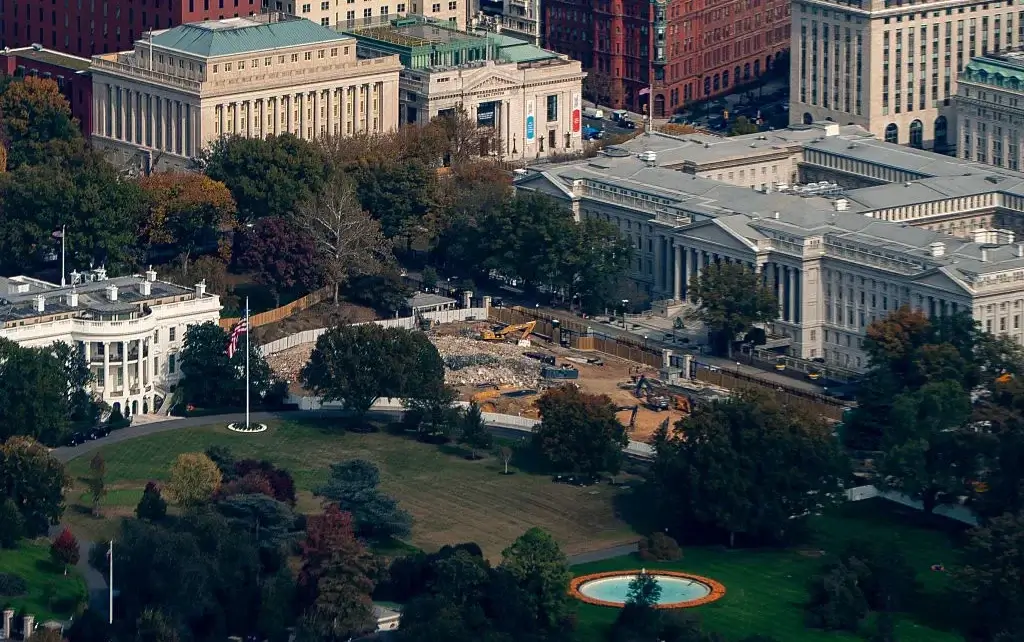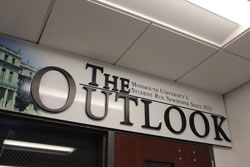Crews have been seen tearing down a portion of the White House’s East Wing to make way for a new 90,000-square-foot ballroom, the first significant structural change to the executive mansion in nearly eight decades. Announced in July, the project was initially expected to cost roughly $200 million, with a more realistic estimate of $300 million as of late, and is being privately funded, according to the White House. President Donald Trump has promoted the plan on Truth Social, writing that the ballroom “won’t cost taxpayers a dime because it is being privately funded by ‘many generous Patriots, Great American Companies, and, yours truly.’” At a Jul. 31 press briefing, he said the hall would be “near it but not touching it,” adding that he was “the biggest fan” of the building and wanted to preserve its historic character, as reported by NBC.
The East Wing, constructed in 1942, has long served as office space for the First Lady and as a cover for the underground Presidential Emergency Operations Center (PEOC). In October, workers removed much of the façade, revealing interior offices and leaving what one New York Post report described as a “gaping hole” on the east side of the residence, according to PBS NewsHour. A White House official told Oregon Public Broadcasting that some offices will be modernized and a “more secure bunker” will be installed as part of the renovation, with the White House Military Office overseeing the PEOC upgrade, according to NPR.
While demolition continues, details about the ballroom’s design have begun to emerge. When finished, the ballroom will feature bulletproof windows and an interior modeled on the Mar-a-Lago ballroom, Trump’s private club in Florida, according to NBC. The White House described the expansion as “a much-needed and exquisite addition,” explaining that the East Room can accommodate only about 200 people for events. In contrast, the new venue will seat approximately 1,000 guests, according to the President, in a new briefing. “The East Wing was badly in need of refurbishment,” Press Secretary Karoline Leavitt told reporters, adding that “past presidents have made their mark on this beautiful White House complex,” according to CBS News. The White House initially listed a $200 million price tag, but later estimates from President Trump and other officials placed the figure between $250 million and $300 million, according to FactCheck.org. Roughly $200 million has been pledged so far through private donations, according to the BBC, with contributors including Lockheed Martin, Amazon, Apple, Coinbase, Comcast, Google, and Meta. $22 million comes from a YouTube settlement with the Justice Department, and Google contributed an additional $5 million. Preservation groups, such as the American Institute of Architects, and members of the National Trust for Historic Preservation have raised concerns about both the process and the funding. Preservationists note that the new ballroom will nearly double the size of the existing 55,000-square-foot White House, according to Oregon Public Broadcasting. The Washington Post reported that demolition began without approval from the National Capital Planning Commission or the U.S. Commission of Fine Arts, both of which traditionally review alterations to federal landmarks. The National Trust for Historic Preservation urged the administration to pause construction, to which the White House argued that the building is exempt from the National Historic Preservation Act, according to Artnet News.
Others have focused on donor influence, with Senator Richard Blumenthal calling the project a “gigantic boondoggle” and warning that contributors “expect something in return,” according to FactCheck.org. Noah Bookbinder of Citizens for Responsibility and Ethics in Washington told Axios that large private gifts create “a real possibility that influences the official’s decision-making.” Former White House ethics lawyer Richard W. Painter called it “use of public office for private gain,” warning it could amount to “pay-to-play,” according to FactCheck.org. Claire Finkelstein, a professor of law at the University of Pennsylvania, told FactCheck.org that the project represents “a misuse of public real estate” that could raise constitutional issues under the Emoluments Clause, a division in the U.S. Constitution designed to prevent corruption and foreign influence.
At Monmouth University, student reactions leaned toward confusion and skepticism. “It’s a little why? What’s the point?” said Shane Hughes, a senior homeland security major. “I think this administration is doing it as a big F-you to the Democrats and to everyone. It’s completely pointless, a big ‘I can do whatever I want’ move.” Hughes said he preferred the project be privately funded but questioned its purpose. “It’s weird. Why are you donating money to a project that doesn’t benefit anyone? I don’t think it helps Trump’s image when everyone says he only cares about his rich friends.”
Carlos Bon, a freshman health studies major, said his reaction was mostly confusion. “I just thought there was no reason for it,” Bon said. “He just did it because he wanted to, for his own gain. If taxpayer money went into it, it would be a bigger issue, but it still feels out of touch. No other president ever had a problem with the White House. He just wants to leave his mark.”
Political reactions have been just as divided, with House Speaker Mike Johnson defending the project, calling it “for the American people” and “glorious,” adding that opposition was driven by “Trump Derangement Syndrome,” according to Colorado Politics. Democratic Representative Jamie Raskin shared a photo of the demolition on social media, comparing it to the 1812 burning of the White House. An ABC News/Washington Post/Ipsos poll from late October found that 56% of Americans opposed tearing down the East Wing, while 28% supported it. Among independents, opposition rose to 61%. The Guardian noted that most respondents were unaware of the project’s private-funding structure.
The White House says the new ballroom will be completed before January 2029, the end of Trump’s second term, according to PBS NewsHour. If finished as planned, it would mark the most significant physical change to the presidential residence since the Truman reconstruction of the late 1940s. While privately financed, the project remains under scrutiny from preservationists, ethics experts, and lawmakers concerned with its cost, oversight, and long-term implications.



